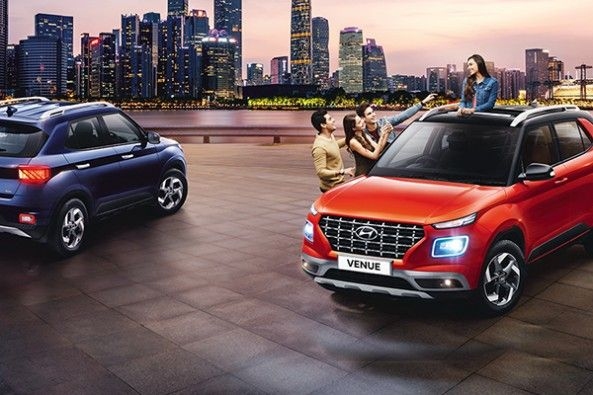General Help
Get information about our website or Droom services
Hyundai Motor India launches a facelifted version every 2 years after the introduction of an all-new product in the market. The company launched the all-new Venue in the Indian market last year. Thus, a mid-cycle update is still a year and a half away from the time it was introduced. Recently, Hyundai Venue Facelift was digitally imagined. OGDA rendered the front-end design of the Venue. The rendered image gives us an idea of how the small SUV could look like when the Facelift arrives in a few years. With the launch of the Hyundai Venue in the Indian market, the company introduced the latest “Sensuous Sportiness” design language that is being adopted by other Hyundai models as well. Thus, the Facelift version will also follow the same.

The rendered Venue Facelift takes inspiration from the 2021 Santa Fe SUV unveiled in the American market, in terms of its front-end design. According to the rendered image, the SUV gets a large and wider grille similar to the one present in the upcoming Santa Fe and has geometric patterned inlay. The vehicle in the rendering, unlike the current Venue, features spilt LED headlamps integrated with T-shaped DRLs. Apart from this, the bumper of the Venue has been redesigned and it looks quite different from the current Venue on sale at present. It also gets light grey inserts embedded in the front faux skid plate instead of the front fog lamps. However, the top-end trims of the India-spec model gets projected fog lamps.

If the Venue receives a facelift, then under the skin, it will carry forward its current powertrain. At present, the Venue is powered by a 1.2-litre naturally aspirated petrol engine, a 1.0-litre three-cylinder turbocharged petrol unit, and a 1.5-litre CRDi oil burner. The 1.2-litre petrol engine churns out 83 bhp power and 113 Nm torque. While the 1.0-litre turbo petrol engine produces 120 bhp power and 172 Nm torque. On the other hand, the 1.5-litre diesel engine belts out 100 bhp power with 240 Nm of peak torque. As for transmission duties, the 1.2-litre petrol engine is linked to a 5-speed MT, the 1.0-litre petrol engine is mated to a 6-speed MT along with 7-speed DCT auto gearbox as an option, and the 1.5-litre diesel engine is available with a 6-speed MT.
Read Also: Range Rover Limited Edition Introduced to Mark 50 Glorious Years of the SUV